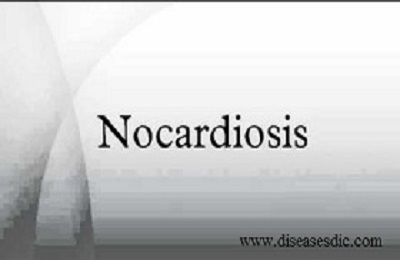Definition
Nocardiosis is a rare infection caused by the Nocardia asteroides bacterium. This type of bacteria can be found in the soil and water of regions around the world. People may become infected with this bacteria when they inhale it or when the bacteria enter an open wound. The infection can’t be spread from one person to another.
Microscopic view of Nocardia asteroides
Nocardiosis most commonly occurs in the lungs, but it may spread to other areas of the body, such as the:
- Skin
- Digestive system
- Brain
- Kidneys
- Heart
- Eyes
- Bones
Epidemiology
Earlier reports estimated the incidence of nocardiosis in the US at 500 to 1000 cases per year. However, due to the increase in the number of immunosuppressed patients during recent decades, the incidence of nocardiosis is also increasing. Nocardiosis has been reported worldwide in all ages and races, and it is 2 to 3 times more common in men than in women. Pulmonary disease is the most frequent clinical presentation (approximately 50% of cases), and most of the infective organisms are from the former Nocardia asteroides complex. Approximately one third of patients with pulmonary nocardiosis will develop disseminated disease. The frequency of Nocardia infections in recipients of solid organ transplants varies between 0.4% and 3%, and the infections have mostly been reported in heart, kidney, liver, and lung transplant recipients. The incidence of nocardiosis is approximately 340-fold higher among bone marrow transplant recipients than in general populations. Primary cutaneous nocardiosis is a rare disease associated with direct inoculation in immunocompetent patients, frequently caused by N. brasiliensis.
Risk factors
- Predisposing factors include
- Lymphoreticular cancers
- Organ transplantation
- High-dose corticosteroid or other immunosuppressive therapy
- Underlying pulmonary disease
- However, about one half of patients have no preexisting disease or condition.
- Nocardiosis is also an opportunistic infection in patients with advanced HIV infection.
Causes 0f nocardiosis
The Nocardia spp is found in soil and enters the human body mainly through breathing. The bacteria initially lead to pneumonia, which may cause sepsis or blood poisoning. In this way, the infection may gradually spread to other areas of the body such as skin and brain. The condition is referred to as disseminated Nocardiosis when it occurs in this manner.
Sometimes, the infection may be introduced through a skin lesion, puncture, cut or wound that may occur while working outdoors. This type of skin infection can take various forms and is known as Cutaneous Nocardiosis. Individuals with occupations or hobbies that involve exposure to soil, such as farming, gardening, landscaping and other field works, are more at risk of being affected by this infection.
Cutaneous Nocardiosis
Symptoms of nocardiosis
The symptoms of nocardiosis vary depending on which part of your body is affected.
Nocardiosis most commonly occurs in the lungs. If your lungs are infected, you can experience:
- Fever
- Weight loss
- Night sweats
- Cough
- Chest pain
- Pneumonia
When lung infections occur, the infection can spread to the brain. If your central nervous system (brain and spinal cord) is infected, you can experience:
- Headache
- Weakness
- Confusion
- Seizures
Skin infections can occur when soil containing Nocardia species gets into open wounds or cuts. Farming or gardening without gloves and protective clothing increases the risk of cuts, thorn pricks, or other minor injuries. If your skin is infected, you can develop:
- Skin ulcers (shallow wound on the surface of the skin)
- Nodules, sometimes draining, with the infection spreading along lymph nodes
What are the complications associated with nocardiosis?
A number of complications can arise from this infection. These vary depending on the area of the body that has become infected:
- A lung infection might lead to scarring or long-term shortness of breath.
- A skin infection might lead to disfigurement or scarring.
- A brain infection might lead to the loss of certain brain functions.
Diagnosis and test
Your doctor can diagnose this infection by performing various tests that check for the presence of N. asteroides bacteria. These tests may include the following:
- A chest X-ray is an imaging test that produces detailed images of the lungs.
- A bronchoscopy is a test in which your doctor uses a thin tube with an attached camera to view the lungs.
- A brain biopsy is a procedure that involves removing a small sample of abnormal brain tissue.
- A lung biopsy is a procedure that involves removing a small sample of abnormal lung tissue.
- A skin biopsy is a procedure that involves removing a small sample of abnormal skin cells.
- A sputum culture is a procedure that involves taking a small sample of mucus.
Treatment and medications
- Nocardia organisms are usually resistant to penicillin. Sulfonamide drugs may be prescribed. However, since most cases respond slowly, treatment with sulfonamide drugs must be continued for several months. Trimethoprim-sulfamethoxazole is often prescribed for immunosuppressed patients. Recurrent infection is common.
- Other drugs sometimes prescribed are Imipenem and cilastatin (Primaxin), Meropenem (Merrem IV), Cefotaxime (Claforan), Ceftriaxone (Rocephin) ampicillin, minocycline, and amikacin. Without treatment the disease can be fatal, so proper and prompt diagnosis is essential.
- If infection occurs and spreads, surgery may be needed to remove and/or drain the infected areas.
Prevention of Nocardiosis
- There are no specific ways to prevent infection. People who have weakened immune systems should wear shoes as well as clothing covering the skin, open wounds, and cuts when they are working in the soil. This could prevent skin infections.
- People who have an organ transplant might be given antibiotics to prevent bacterial infections. Some studies have shown that this might prevent nocardiosis.
- Outbreaks of nocardiosis in hospitals are rare. A few outbreaks have been linked to other patients, healthcare workers, and the release of bacteria in the air during hospital construction work. Hospitals should maintain strong infection control practices to avoid outbreaks of nocardiosis.

